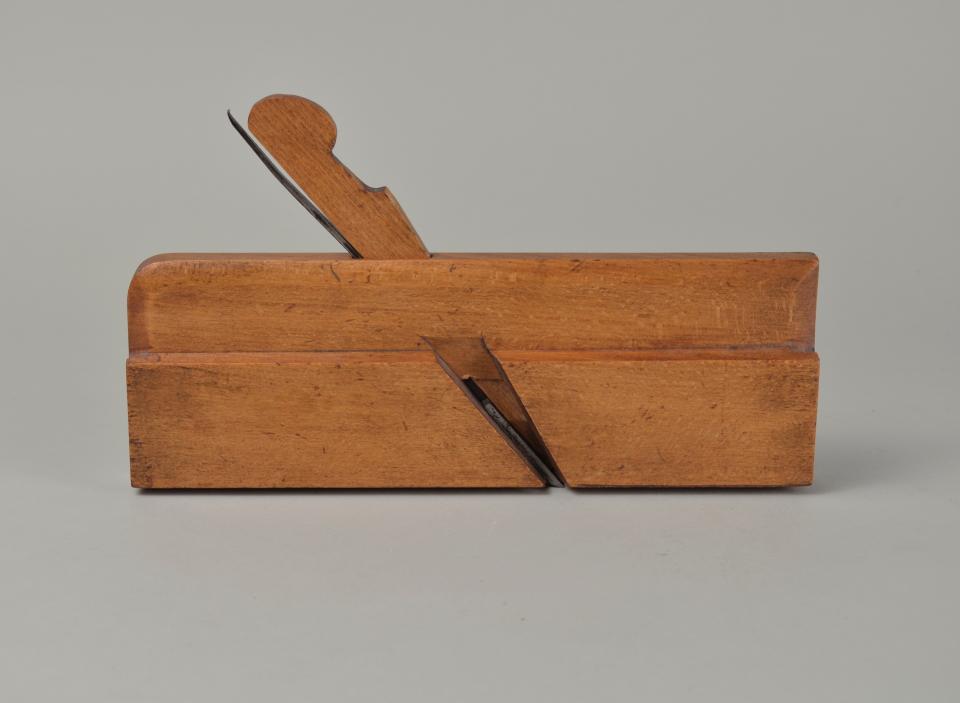
Length 23.4cm x Width 2.3cm x Height 14.9cm
a- Length 23.4cm x Width 2.3cm x Height 8.1cm
b- Length 16.4cm x Width 2.1cm x Height 0.6cm
c- Length 17.5cm x Width 0.9cm x Height 0.2cm
Side bead molding plane comprised of three parts, a wooden body with an angled cutout through the middle and a bead sole/profile on the bottom (a), a wooden wedge piece that is rounded at the top and tapers to a point at the bottom (b), and an iron with a thin stem and a wider blade at the bottom that matches the curve of the bead profile on the sole (c). The wedge and the iron fit together inside of the angled cutout in the main body and extend out of the top of it. The wedge holds the iron in place as it cuts the wood below. Stamped on the toe of the plane is "T. HERON", "THO- MACHIN WARRANTED TORONTO", and "I BLOWER". Stamped on the heel is "J. WALDRON", "T. HERON.", "1/8", and "I BLOWER". There is also a stamp on the stem of the iron that reads, "NEWBOULD".
Side beads, or beading planes, are used to put a bead along the edge of a board, and can be used in many situations, such as back boards, the bottom of table aprons, or along shelf fronts. A very versatile plane, these were, along with hollow and rounds, perhaps the most common molding plane produced. These are one of the easiest molding planes to use, with an integral fence and depth stop, and no spring. (The plane is held vertically.) Simply hold the plane against the edge of the stock being profiled, and make passes until the depth stop prevents any further cutting. For a different treatment, running the plane along two sides of a corner will produce a 3/4 bead on that corner.
